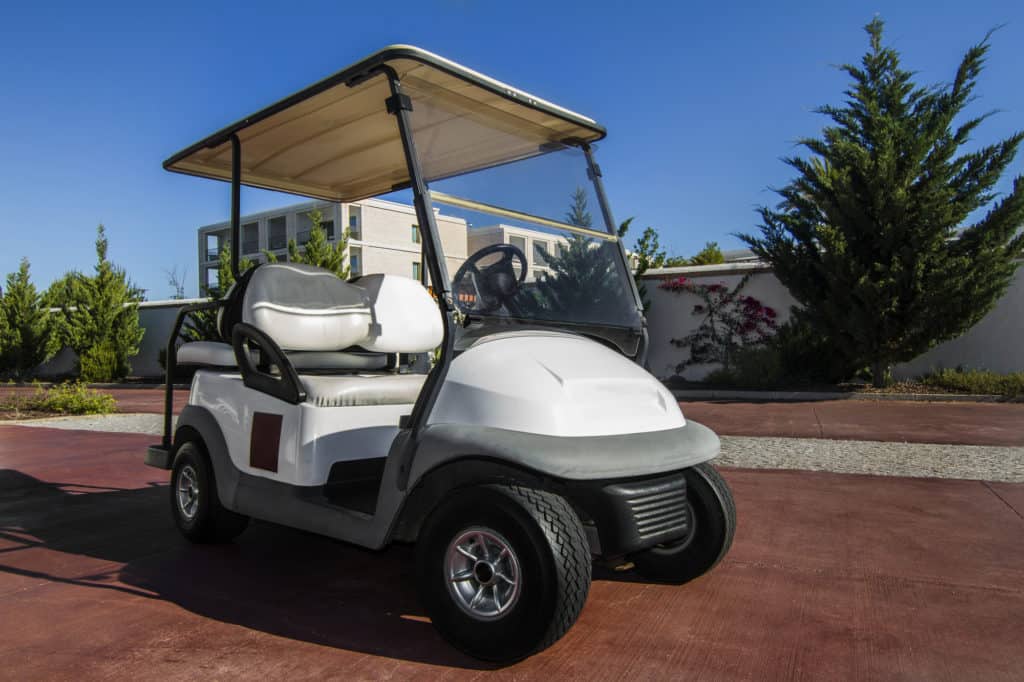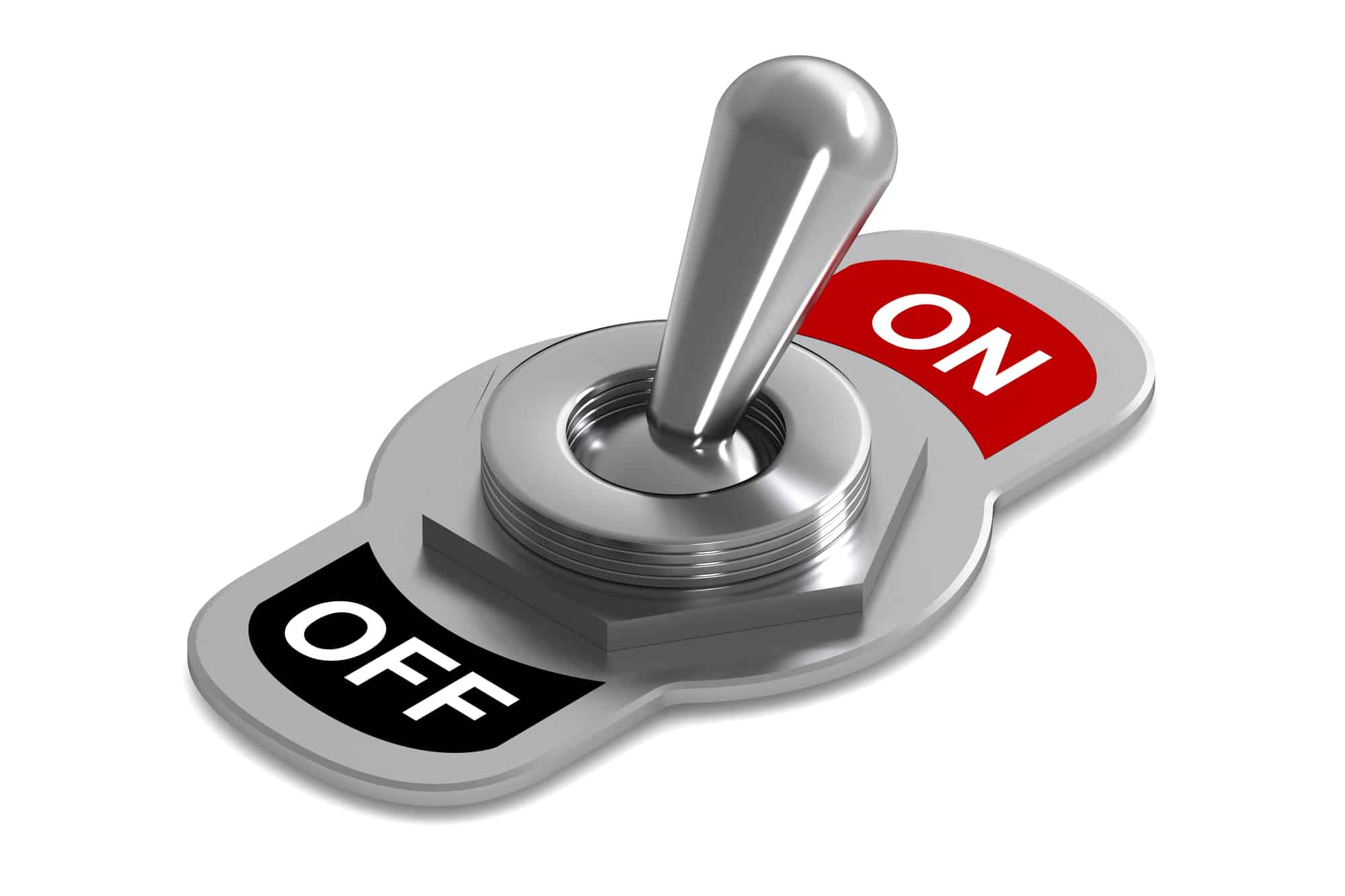Gas-powered golf carts have a level of power that battery-powered ones do not and are often used by those who use their cart for serious golfing or for off-road use.
However, these carts require more maintenance to operate smoothly and can run into issues that electric ones do not.
For example, problems with backfiring can trigger damage to an engine that you cannot tolerate.
Thankfully, you should be able to diagnose this issue and figure out what is wrong.
Here are 4 Common Reasons That Your Golf Cart May Be Backfiring
1. The Throttle May Not Be Closing Properly
A gas-powered golf cart utilizes a handful of different parts that help to keep the fuel flow smooth.
When the fuel flow isn’t properly handled, there is a strong chance of a backfire affecting your cart.
Typically, this occurs for a number of reasons.
The first and most common of these problems is the throttle not closing properly.
This issue occurs when the engine hasn’t been properly balanced in a way that makes sense for its operation.
For example, there is something called a microswitch on gas-powered golf carts that has to move before the accelerator throttle plate goes into action.
This plate helps to control the accelerator and, when not working properly, may send too much or too little fuel to the accelerator based on your driving speed.
When this happens, the cart may end up burning fuel improperly and suffering a backfire, though other issues may also trigger to worsen this situation.
Thankfully, you can check this situation by doing a fairly simple test.
Most cart owners should be capable of handling this situation because it is purposefully not very demanding for cart owners.
Start by turning off the ignition key and carefully removing your seat from the cart.
Don’t worry – all you need are a few wrenches to handle this step.
Store any connecting elements in a small plastic container to make sure that they don’t disappear on you when you need to put the seat back.
Now, have somebody push the accelerator pedal down slowly.
As they do, listen for the sound of a click – this is the microswitch.
You should usually find it just inside the engine though you may have to find it near the pedal, as well.
As you wait for the click, pay attention to the throttle – you will see it move as the cart’s pedal goes down.
Did the throttle move before you heard the click?
If so, your plate is not closing properly and you have a timing issue.
Look at the throttle to find a cable – it should slide through a hole in the throttle lever.
Find the nut holding the cable down and loosen it.
Now, push the pedal down until you hear the click.
Tighten the nut back up and you should have the proper timing for your throttle plate.
Put your seat back on and ride your golf cart for awhile.
Does it accelerate smoothly again and is it no longer backfiring?
If you still notice a backfire, you may have another issue.
Unfortunately, this situation may mean that your throttle plate is obstructed or bent in a way that makes it impossible to close fully.
And you really can’t do repairs on this part without removing your carburetor entirely.
Typically, we believe that it is best to have a professional handle this process for you.
Doing so will save you money and also ensure that you don’t cause any problems with the throttle that DIY repairs may trigger when done improperly.
2. The Fuel Mix is Not Balanced
So, you’ve either fixed the throttle issues or didn’t see any concerns that needed to be fixed and your cart is still backfiring?
What now?
Well, pay attention to the smell of the fuel every time your cart backfires.
Does it have a very sweet smell that is unusual?
Is the backfire smoke a rich blue?
If so, then there’s a good chance that your fuel mix is far too rich.
This problem causes a backfire because you’re getting too much gasoline and your engine is reacting accordingly.
Thankfully, there are a few different ways that you can fix this problem.
The first is to cycle your engine by using the proper adjustment screws on the side of the carburetor.
These screws are located on the bottom of most carburetors and should be parallel to the ground.
If you’re uncertain, look for a lock nut – these nuts are designed to lock more heavily into place and can be adjusted on engines to produce different effects that affect your engine in several ways.
Start by loosing the screw and turning it as far as it will go.
Now, you can turn it back one and one-half turns.
This step should help to keep the fuel mix more balanced and avoid complications.
However, this fix is sometimes not enough because you may need to cycle the carb adjuster.
There are two ways to perform this step, which we’ll discuss briefly to help you get started on proper cart maintenance.
On a four-cycle engine, you should find a plastic cap on the top that allows you to limit the flow of gasoline.
Typically, these caps only need to be tweaked slightly to produce a positive effect – so turn it to the left if you’re getting too rich of a fuel mix.
You can, alternatively, turn it to the right if your mix isn’t rich enough.
Typically for this fix, though, your fuel will be too rich rather than not enough.
If that fix doesn’t work for you, there is another that you may want to try.
Start by carefully removing the drive belt with the engine off and then tweaking the adjustment screw as the engine is running.
Adjust the screw until the engine is running as smoothly as possible.
Now, you can fully tighten the screw, turn off the engine, and replace the drive belt to start your cart up again.
Some cart owners may have the skills necessary to handle this repair – we’ve seen quite a few do it with no issue.
However, some may be quite uncomfortable with tweaking their engine in this way.
We understand that and usually suggest that you get professional help to manage this type of repair.
Though it doesn’t sound too hard and doesn’t require a lot of challenging steps, mistakes can occur that may put you at a severe disadvantage later – you’ll likely need to get a professional to fix your errors.
3. Too Much Carbon on the Pistons and Valves
Though the fixes above should handle most issues with a gas-powered golf cart and its backfiring, there may be a few other issues that could cause this problem.
If you’ve tried the fixes above and your cart is still backfiring, you may need to check your engine’s pistons and valves for carbon buildup.
This problem isn’t that common and is usually only an issue in older carts.
However, there is a chance that it could happen and cause problematic backfires.
Why does this issue cause backfires?
Well, carbon coating your pistons and valves will potentially ignite after the engine has been running for awhile.
That’s because the action of the pistons themselves can produce heat that may trigger explosions in the carbon.
Though these explosions are not huge, they can cause a backfire by igniting the engine when the spark plug is not being turned on at the time.
As a result, backfires and even engine damage may be a real issue.
That’s because backfires of this type will be fairly persistent and may cause the pistons to move more rapidly than necessary.
And when this happens, they may end up getting damaged on various operating areas, such as the piston rods and the valves.
Therefore, cart owners cannot tolerate this kind of buildup and should do what they can to make sure that it doesn’t happen to them.
Thankfully, there are a few steps that can be taken to manage this issue with relative ease.
Typically, you’ll need to carefully remove the head of your engine to get at the pistons.
Do this when the engine is turned off, obviously, and wait an hour or so after your last use to avoid heating issues.
Check the tops and the sides of your piston for excessive carbon buildup – called “coke” in the engine business.
Use a scraping tool to break off this material.
Don’t scrape too hard because you can damage your pistons if you aren’t too careful.
In fact, you may just want a professional to handle this situation for you because they are much less likely to cause damage to the pistons.
Most should have some type of cleaning tools that they can use to scrape away the coke in the engine.
Just as importantly, they will be able to get rid of any carbon that falls into the piston structure and keep it from igniting later at the bottom of your engine.
4. Carbon Built Up in the Muffler
Lastly, you may also end up getting carbon buildup on your muffler that may cause backfires in the muffler itself.
This situation often occurs because of the heavy amount of exhaust that comes out of a cart.
This exhaust is filled with carbon – though not as much as it used to have before carburetors and other tools – and can build up not only on the muffler pipe but inside the whole unit.
Muffler and carbon-related backfires are typically noted for being somewhat unexpected and irregular, usually occurring after the cart has been warm for some type.
That’s because the muffler will take awhile to fully warm up when driving and may not backfire for several moments.
This sporadic nature often makes it challenging to identify this problem, though this fix is often quite simple.
For example, some have found that placing a muffler on a barbecue to heat it up will burn off the interior debris and make it easier to remove.
Don’t place the muffler directly on any flames!
Instead, it should sit on the grill well above any direct flame exposure.
After half an hour, turn off the grill and wait a few hours for the muffler to fully cool down before turning it upside down to remove the ash.
If you’re not comfortable with this process – understandable! – you can take your cart to a professional and have them perform a similar process.
They will remove the muffler and heat it up to break down the carbon.
Once the carbon is ash, they will dump it out and reattach the muffler.
So the process is similar but done by experts, minimizing problems.




Leave a Reply